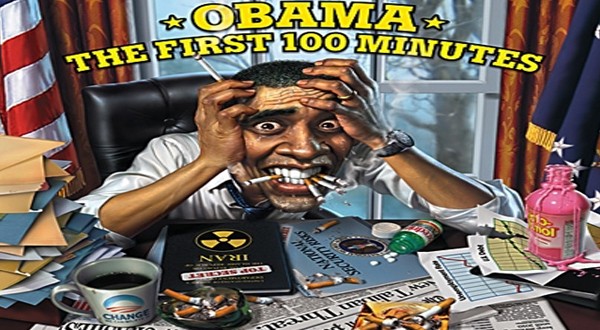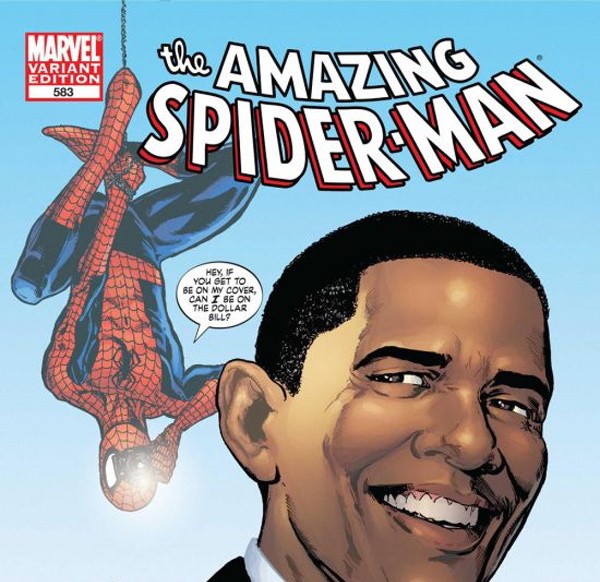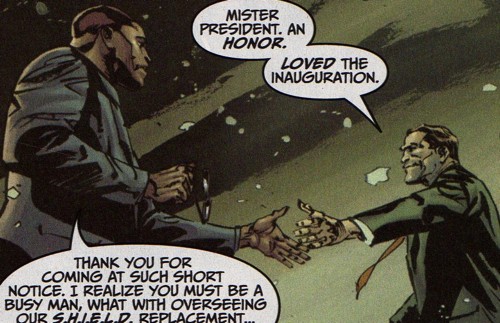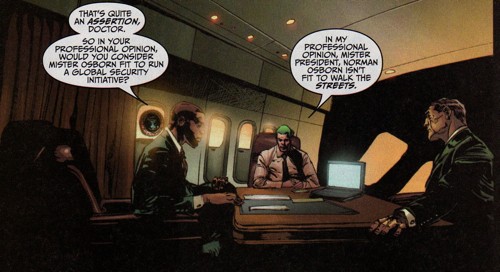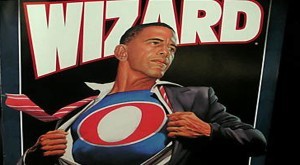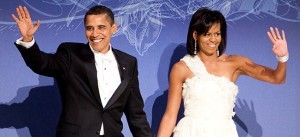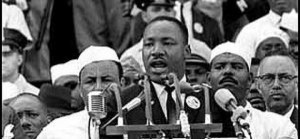He’s the coolest MOFO on the planet and he appears in way more comic books than any other politician.
As some stores were still seeing healthy lines of customers looking to get their hands on the third printing of Amazing Spider-Man #583 this week, President Obama’s run as a comic book character has yet to let go of the fascination of many of the new President’s supporters and those looking for a piece of history.
President Obama is also slated to make an appearance in Youngblood #8; fourth printings of both Amazing Spider-Man #583 and IDW Publishing’s biographical Presidential Material: Barack Obama are due in stores on February 4th; the fourth printing of Erik Larsen’s Savage Dragon #137 is due on February 25th, and let’s not forget that a certain United States President who’s currently appearing (and is the target of a super-human assassination attempt) in Marvel’s Thunderbolts looks very familiar. Oh, and he just made the cover of the soon-to-be quarterly MAD Magazine. 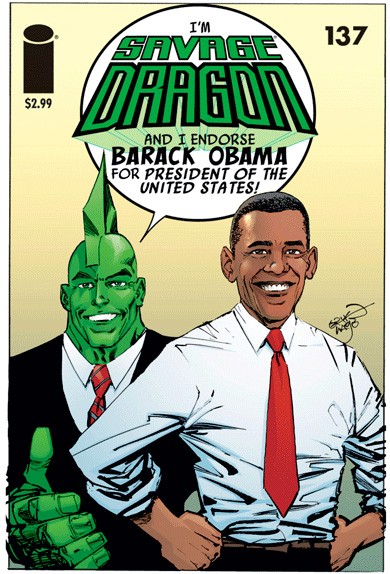
With all of these appearances, one might assume that the most popular President in a generation is something akin to “public property” and anyone can use his likeness or even him in any story as they see fit, just as they would set a scene near the Lincoln Memorial. That’s not quite the case.
Currently, there is no uniform Federal standard that governs an individual’s right to publicity – publicity rights are governed by state law, with the First Amendment placing a limit on how far the laws can go. According to Newsarama’s legal analyst (and Blogger) Jeff Trexler, Wilson Professor of Social Entrepreneurship at Pace University, state and case law generally recognize a public affairs exception, that is, an image that is clearly a comment on a public figure or official (such as an editorial cartoon, a parody or a satire) will be protected. The amount of protection the representation enjoys tends to decrease with the increasing commercial use of the image.
The line between comment and commercialization is one that comics have tread before. As long time Newsarama readers know, in 1996 The Winter Brothers sued Joe Lansdale, Tim Truman, Sam Glanzman – and then Time Warner (DC Comics’ parent company) over their likenesses being used as the basis for half-human/half-worm creatures in Jonah Hex: Riders of the Worm and Such. While the issue at the core of that case was the transformative nature of the likenesses that appeared in the comic (it was found that the comic was acceptable satire and parody), the basics were clear – public figures have a right to protect their likeness.
This was seem more recently in 2004 when California Governor Arnold Schwarzenegger filed suit against a bobblehead maker, claiming that the company had appropriated Schwarzenegger’s image for purely commercial purposes without his permission or consent. The case was settled, although with Schwarzenegger placing limitations on the doll and its proceeds.
So where does the boundary between protected and non-protected use of an image of a public figure lie? Trexler gave some comic book examples.“As a general rule of thumb, the more a use appears to comment on the public official or issue, the more likely it is to be recognized as protected speech,” Trexler said. “The appearance of Obama in Licensable Bear was arguably a paradigmatic protected comment, using Obama to satirize the commoditization of public life. Obama’s appearance in Spider-Man was arguably little more than a commercial appropriation of Obama’s likeness and thus, it could be argued, less protected.”
But if you look around, you’ll find hundreds, if not thousands of products with Obama and other public figures likenesses on them, obviously being used for commercial purposes, and making no comment on the politician or public figure whatsoever. Why isn’t the news filled with stories of lawsuits?
“The consensus assessment is that this would be politically unwise,” Trexler said. “Imagine if Obama started suing for a cut of all Obama merchandise – though he might get rich, he could lose a considerable amount of political capital.”That’s not to say that public officials can’t sell their own image and appearance for purely commercial means. While no one really needed to know about Bob Dole’s erectile dysfunction, the check from Viagra surely cleared at the bank. And it’s not just comic books that are appropriating the image of Obama – or his family members. As recently reported, Ty, the maker of Beanie Babies, has produced dolls of the Obama children, Sasha and Malia, to the reported objection of Michelle Obama, who cited the children’s right of privacy. So what does the future hold for President Obama as a comic book character?
While he still has a couple of appearances to make, given the announcements, the President’s likeness will probably fade from current comics within a few months. Although, who’s to say readers really saw him anyway? When asked about the “house rules” they have when depicting President Obama in their comics, such as in the most recent issue of Thunderbolts #128 and #129, a Marvel spokesperson said that “the character wasn’t intended to be President Obama and merely representative of the current president in the Marvel Universe, not necessarily Obama himself.”Though he appears as himself in Spider-Man, it appears as though Marvel is taking the conservative approach when it comes to the legal issues that surround the use of a likeness in a commercial product, and just not using him – although readers’ mileage on that last bit is sure to vary.
Source: Newsarama

